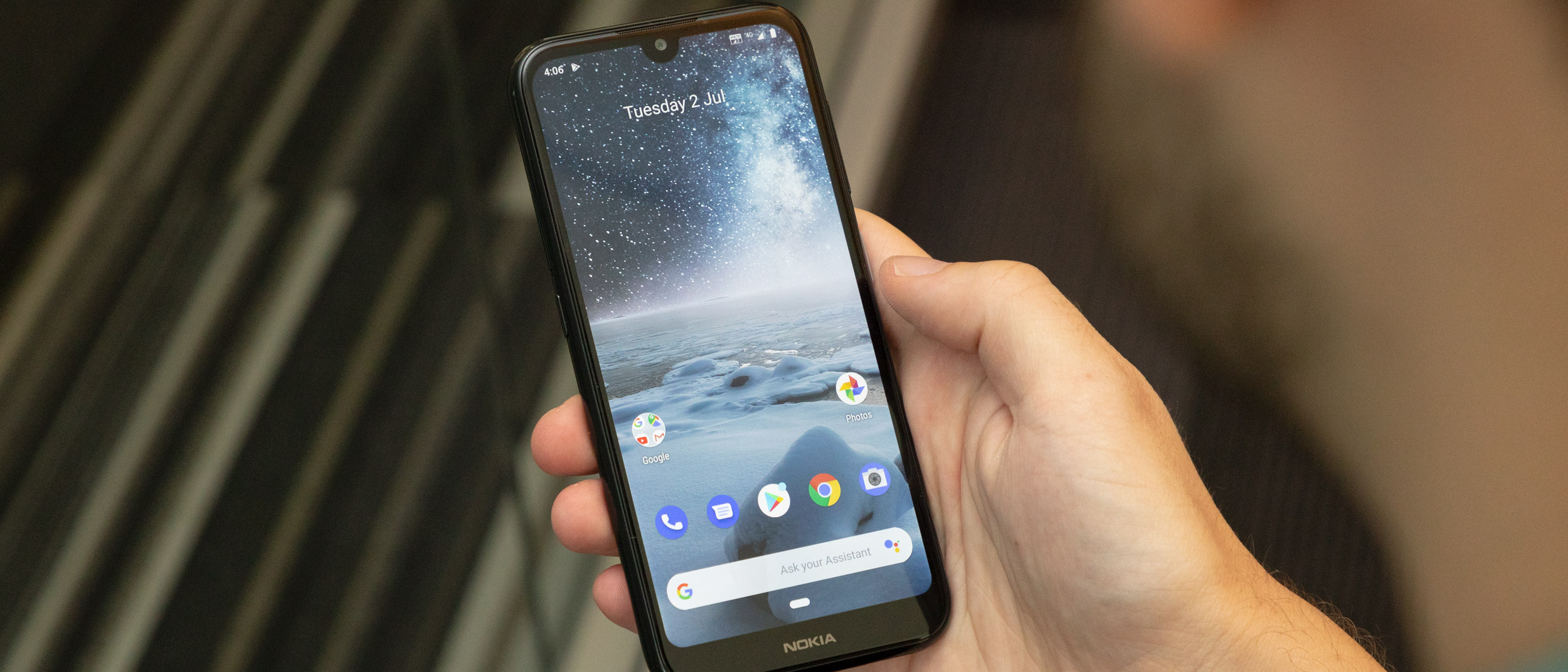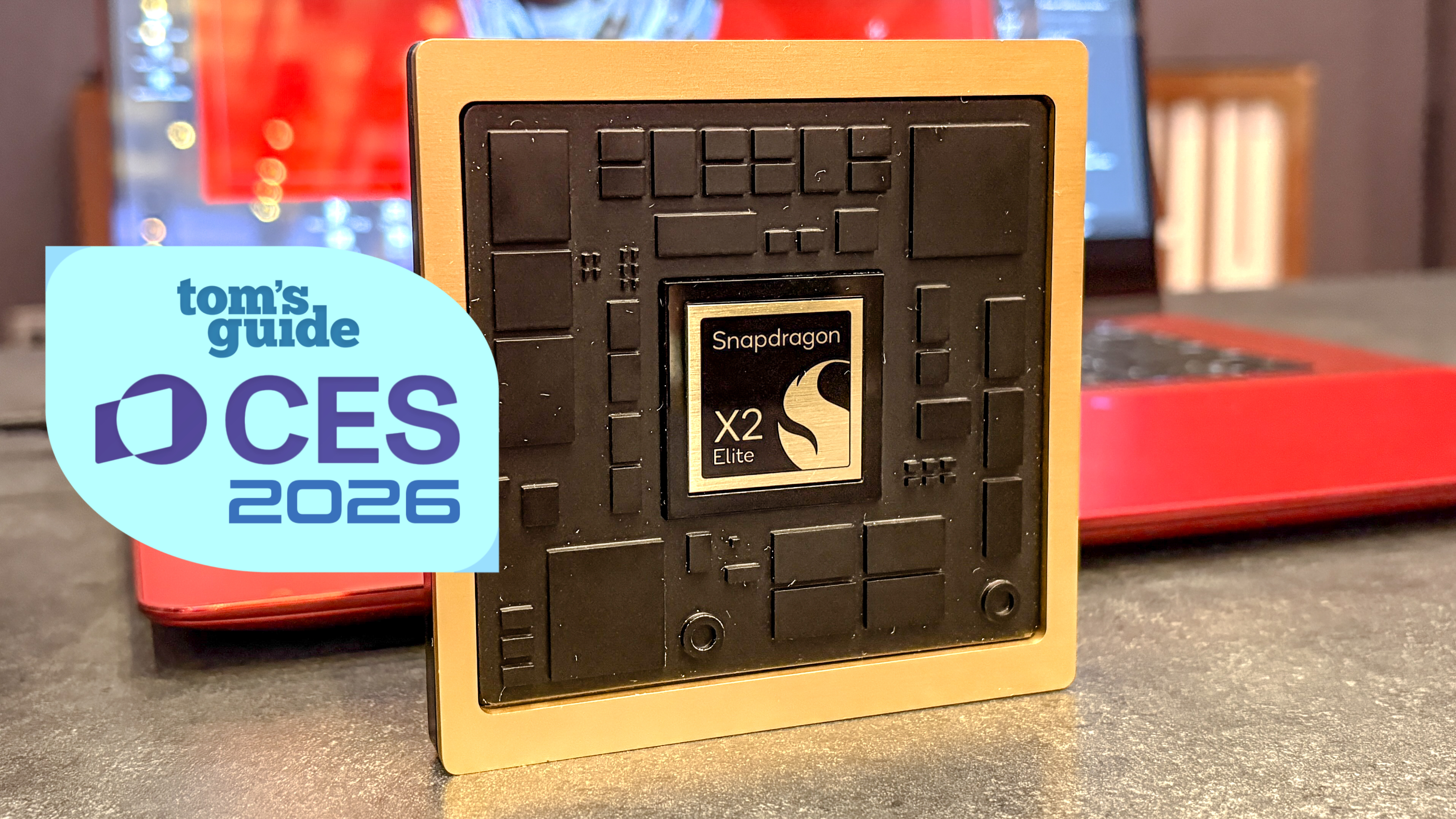Tom's Guide Verdict
Skip it, unless you really want to spend less than $200 on a phone. On paper, the Nokia 4.2 is a solid value with a great design. However, its quality software and build conceal underwhelming performance that you won't want to live with — especially in the face of competitively priced hardware from Motorola and even Nokia itself.
Pros
- +
Nifty notification light in power button
- +
Charming, compact design
- +
Low price
- +
Android One software
Cons
- -
Still rocking a micro USB port
- -
Occasionally slow performance
- -
Dim, low-res display
- -
Passable cameras
Why you can trust Tom's Guide
How cheap does a smartphone need to be to qualify for the budget tier? That question has gotten harder and harder to answer in recent years, as handset prices have continually risen.
Fortunately, HMD Global isn't blindly following trends with its introduction of the 5.7-inch Nokia 4.2. At $189, I'd venture a guess and say it's below most people's threshold of what constitutes cheap — especially as some low-cost rivals, like Moto's G7 series, have crossed the $300 barrier.
And yet, for how little you're paying for the Nokia 4.1, you still get minimal bezels; dual cameras at the rear packed with special effects to add a bit of pop to photos; a reasonably priced, 3,000-mAh battery; and pure, up-to-date Android One software, as Google intended.
The Nokia 4.2 is a respectable, cheap phone — nothing more, nothing less. And although you could certainly find something better if you spent $50 to $100 more, for less than $200, right now there isn't anything that comes close.
MORE: Best Cheap Phones 2019: Top Android Picks Under $300
Price and availability
The Nokia 4.2 costs $189, comes in two colors — Black and Pink Sand — and is sold unlocked in the United States at Best Buy, B&H and Amazon. The phone supports only GSM carriers, such as AT&T, T-Mobile, Metro by T-Mobile and Cricket Wireless. CDMA-based networks, like the ones at Sprint and Verizon, won't support the Nokia 4.2.
In the United Kingdom, the Nokia 4.2 goes for £149, and is sold by Amazon. In both the U.S. and U.K., the device comes equipped with 3GB of RAM and 32GB of onboard storage, with the option to expand that by up to 400GB with a microSD card.
Get instant access to breaking news, the hottest reviews, great deals and helpful tips.
Nokia 4.2 Specs
| Price | $189 |
| Display (Resolution) | 5.7-inch LCD (1520 x 720) |
| Rear Camera(s) | Dual: 13 MP wide (ƒ/2.2); 2-MP depth sensor |
| Front Camera(s) | 8 MP (ƒ/2.0) |
| CPU | Qualcomm Snapdragon 439 |
| RAM | 3GB |
| Storage | 32GB |
| microSD | Yes, up to 400GB |
| Battery | 3,000 mAh |
| Colors | Black, Pink Sand |
| Size | 5.87 x 2.81 x 0.33 inches |
| Weight | 5.68 ounces |
Design: Hard to believe it's under $200
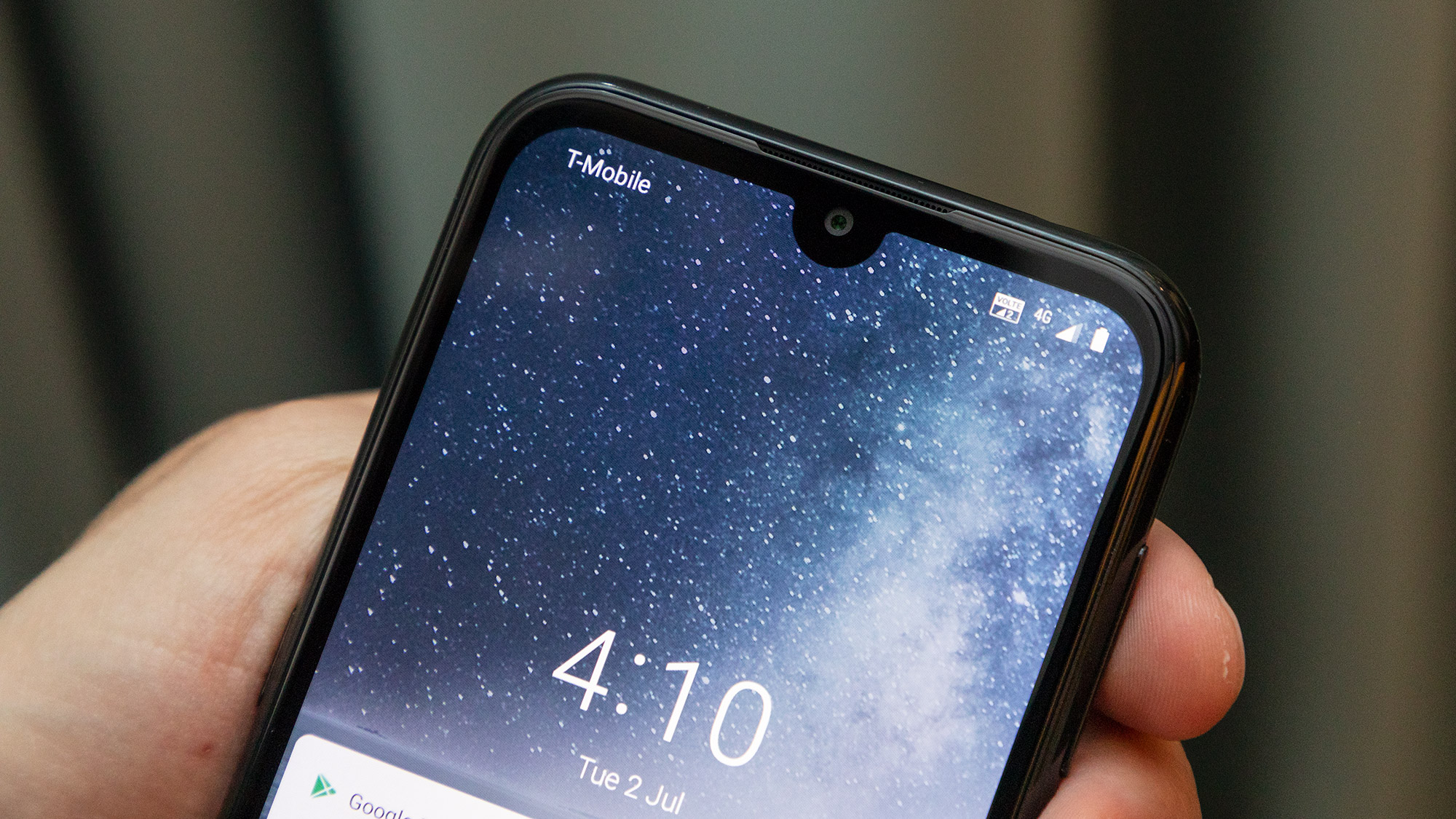
"The Nokia 4.2 demonstrates a clever way to use plastics and cheaper materials to lend a premium, thoughtful fit and finish."
Notched displays are hardly uncommon in the mobile world these days. But a notched display in a sub-$200 phone? That's still a rarity.
While I'm not the biggest fan of notches, the Nokia 4.2's certainly makes the device looks like it costs several hundreds of dollars more than it actually does. So, in that respect, you could say the design achieves its intended purpose. The bezels are quite slim on the top and sides, though since this is a $189 handset after all, the chunkier bottom lip isn't particularly surprising or offensive.
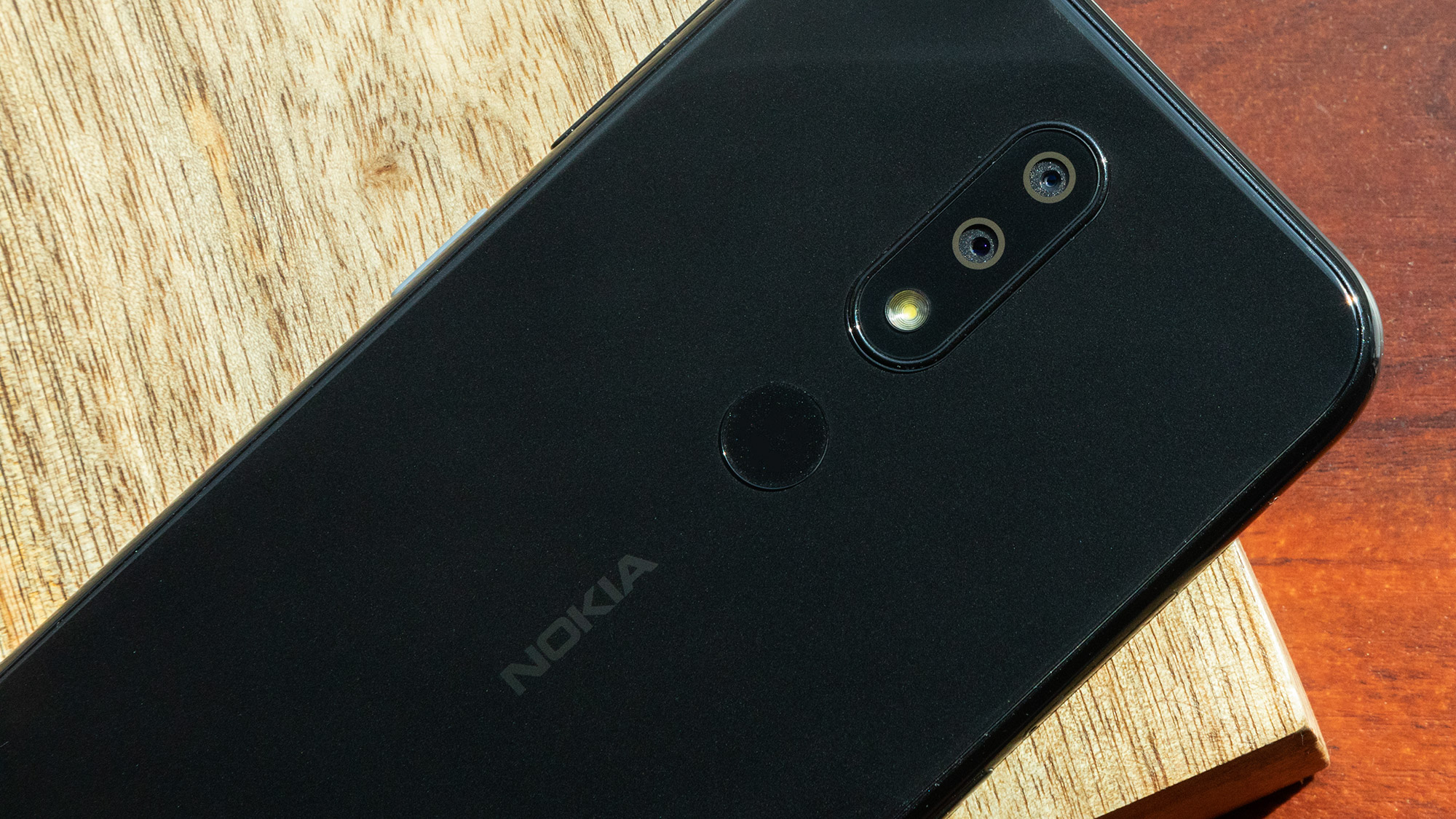
The Nokia 4.2 joins the slabs of glass on the front and rear with a glossy polycarbonate frame. The rounded rectangular footprint and curved edges are very evocative of the iPhone XS; in fact, the 4.2 is roughly the same size and shape as the XS, just slightly taller and a hair thicker, allowing it to accommodate a headphone jack.
On the back of the Nokia 4.2, you'll find a capacitive fingerprint sensor stashed below vertically stacked dual-lens cameras. It would have been nice if the scanner were a bit more prominently recessed, because it can be difficult to locate just feeling around for it, but this is mostly a nitpick; it gets the job done.
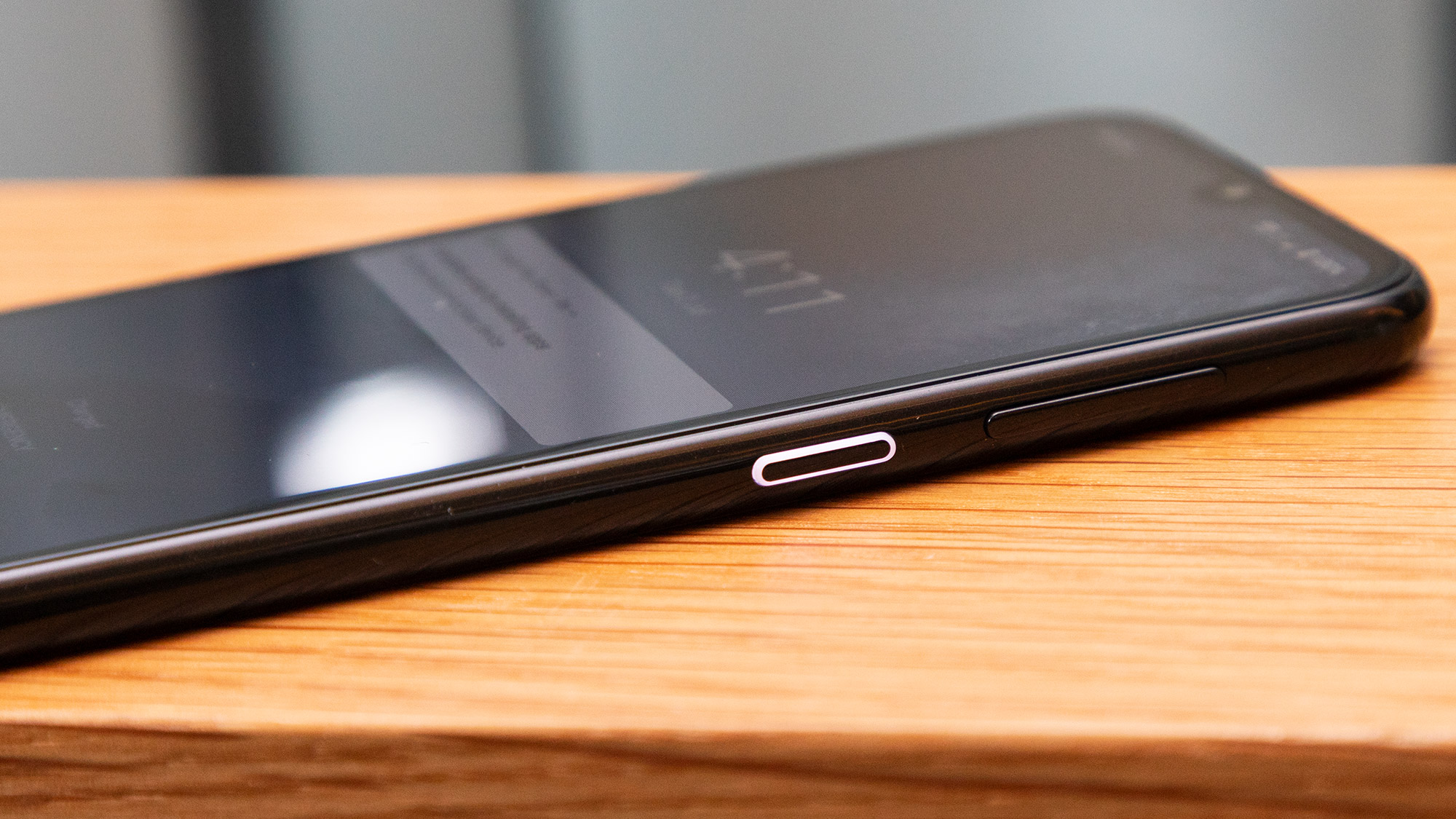
Undoubtedly, the 4.2's most distinctive feature is its illuminated power button. When you receive a notification, the outer edge of the key breathes softly white. It's a very nice touch that's reminiscent of the Android notification LEDs of old. And if you don't like the feature, you can always turn it off.
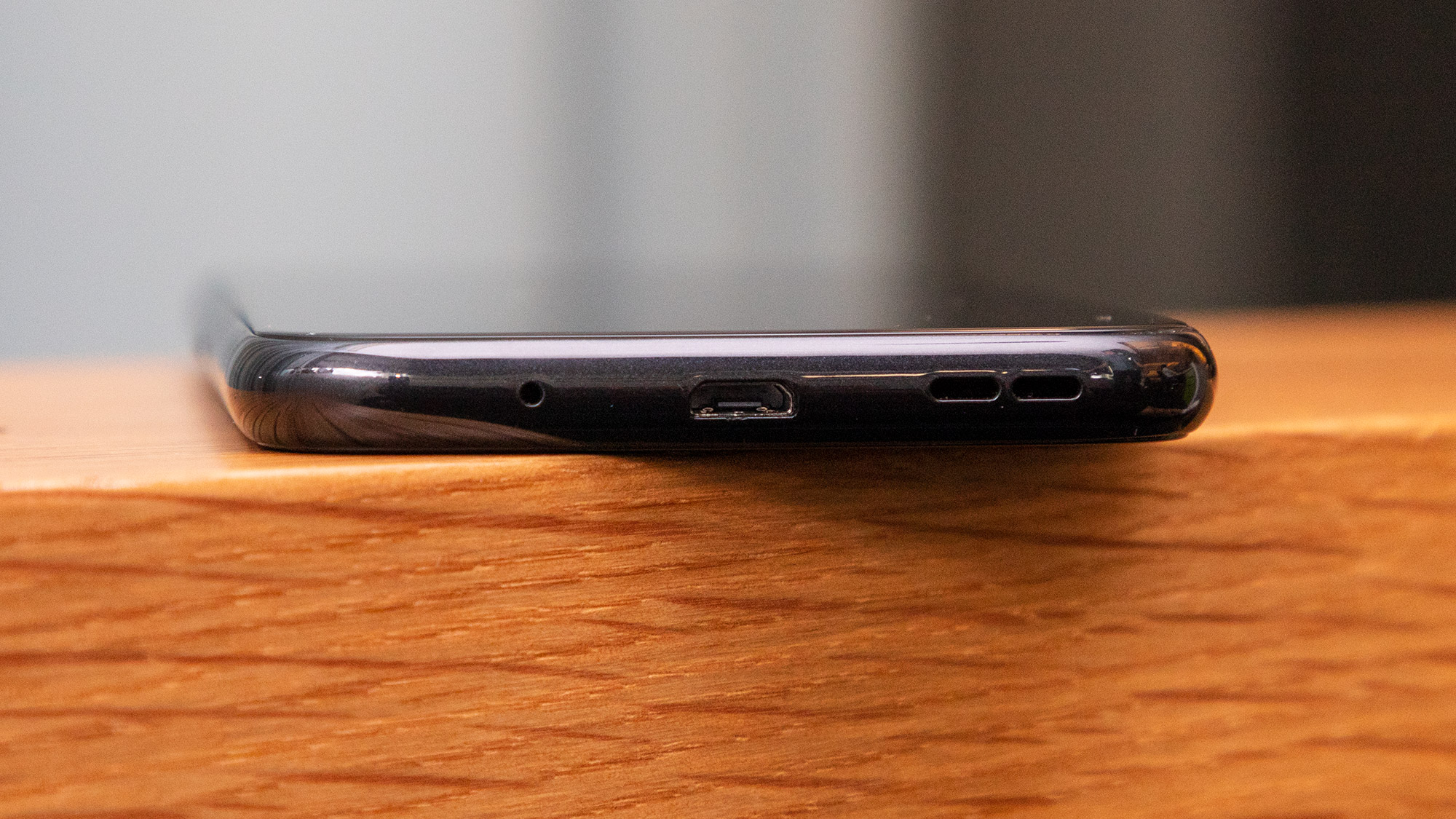
If I had one serious gripe about the Nokia 4.2 from a usability standpoint, it would have to be HMD's decision to opt for micro USB over USB Type-C ports. It's not uncommon to see micro USB in superlow-priced handsets, but perhaps it's a testament to HMD's design and build quality that it really feels like it doesn't belong on the 4.2. Micro USB accessories are fading into obscurity, and even if it meant trading the notch or cutting costs elsewhere, I think I'd rather have the wider compatibility and speedier charging that comes with the new connector.
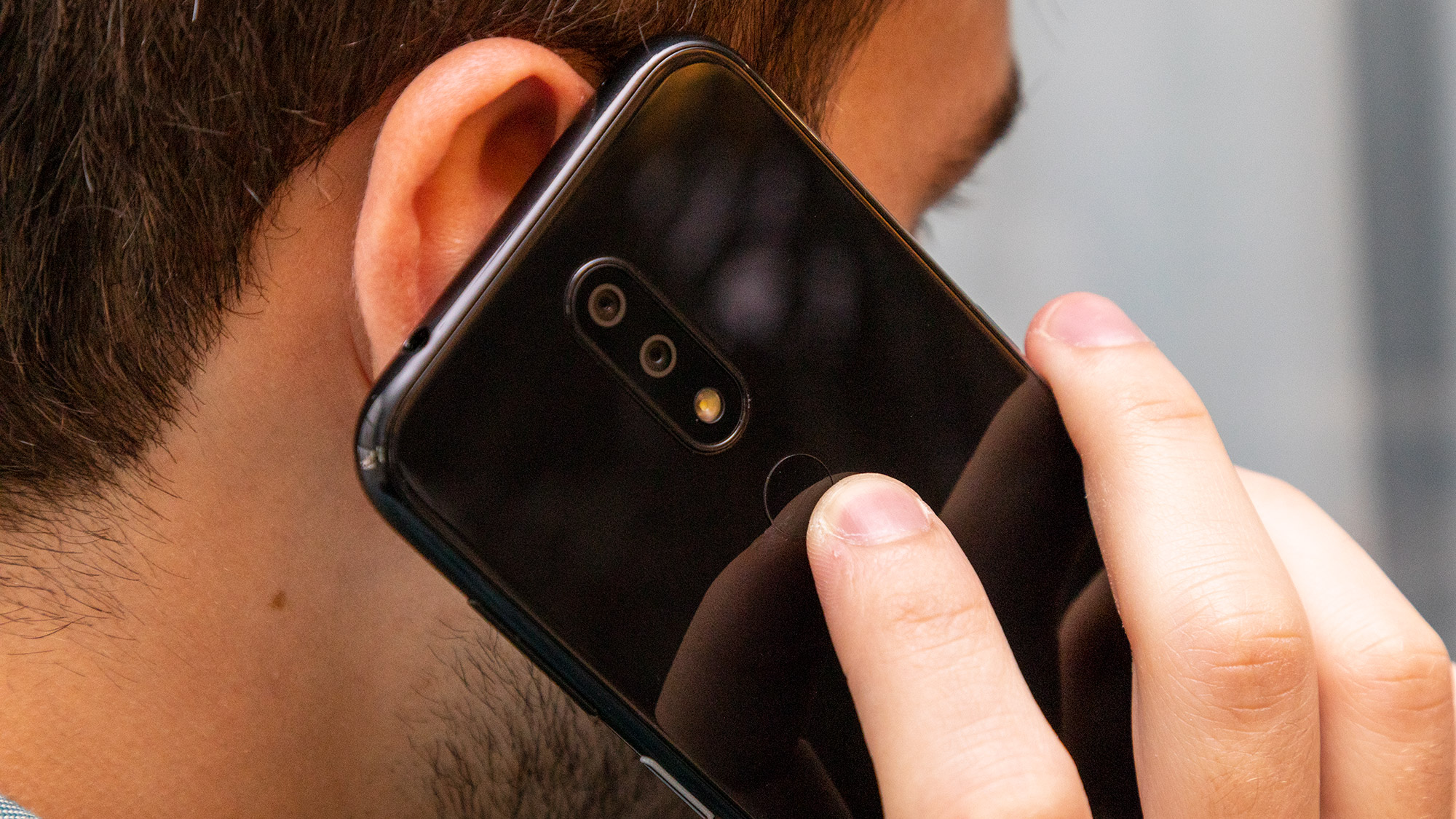
Our review unit came in Black, and while the phone looks fine enough that way, I fell in love with the Pink Sand colorway when I first saw the 4.2 earlier this year. The hue itself is lovely, but I also really dig the powdered matte finish over the frame, which is a really clever way to use plastics and cheaper materials to lend a premium, thoughtful fit and finish. Given the choice, it's the flavor I'd rather have for sure
Display: Cheap, and it shows
The 5.7-inch, 1520 x 720 LCD panel in the Nokia 4.2 doesn't get particularly bright, produce tantalizing colors or feature especially crisp pixel density. But, for $189, it'll do.
After being exposed to so many QHD OLED panels with extra-wide color gamut support and HDR, I have to say that I wasn't blown away watching the trailer for the upcoming Ford v Ferrari film on the 4.2's screen.
Witnessing driver Ken Miles, portrayed by Christian Bale, trail a pack of Corvettes at California's Willow Springs raceway in his AC 289 wasn't quite as breathtaking as it should've been — the colors weren't very vivid, and the image just wasn't clear enough.

Still, this isn't a bad display — just an unremarkable and cheap one. With a peak full-screen brightness of 348 nits, the 4.2 falls well below our 488-nit category average for smartphones, let alone the $249 Moto G7 Power's score (558 nits). Color accuracy is strong, with a Delta-E rating of 0.28 compared with the Motorola's 0.35. (Numbers closer to zero are better.)
If you favor bright, bold colors, the 4.2's sRGB coverage of 95% simply won't cut it. The wide majority of phones routinely trump 100% — our average happens to be 161% — and HMD doesn't provide any options for a more saturated color profile, so you're pretty much stuck with what you see out of the box.
Camera: Nothing special
The Nokia 4.2's 13-megapixel, ƒ/2.2 aperture lens does most of the heavy lifting with respect to photography, though there's also a secondary 2-MP sensor playing sidekick, providing the stereoscopic vision that allows the device to capture depth. On the front, there's an 8-MP, ƒ/2.0 camera for selfies.
Nokia's budget imaging hardware is typically fine enough for what you're paying, as HMD eschews gimmicky features and overprocessed scenes in favor of realistic, what-you-see-is-what-you-get colors. However, the 4.2's cameras don't even impress on that basic level.
Take, for example, this scene captured on a dreary day following a rain shower in New York City's Bryant Park. The 4.2 delivers a shot that could use a great deal of sharpening compared with what the Moto G7 Power captured. There's also a slight green cast pervading everything, and the highlights pouring through the canopy of trees in the sky are almost blinding. The G7 Power's take is far from perfect, either, though it navigates the challenging scene far better.
Looking out to the street from inside the dim entrance of a building, both phones again clearly struggle with highlights; the asphalt and sidewalk appear white hot. Meanwhile, inside, the 4.2 renders the brick and marble with a bit more brightness than the G7 Power could muster. Again, the Nokia-branded handset could use a splash of color and crisper details overall, though I have to admit I was a little surprised with the 4.2's ability to paint in the shadows.
My colleague Jorge appeared equally blurry through the lenses of both devices, but the Nokia was downright fussy and difficult to work with here. The 4.2 features a dedicated Bokeh mode to make use of those dual cameras, yet its autofocus is remarkably stubborn. I had to ask Jorge to stand still for about a good 20 seconds when attempting to capture a serviceable shot with HMD's phone: The feed from the viewfinder repeatedly cycled in and out of focus, the camera app begged for more light (even though I was in an already well-lit room) and the depth effect took what felt like ages to process on the 4.2's under-equipped silicon.
Once I was able to come away with a workable portrait — and Jorge was mercifully permitted to move again — there still remained a ring of focus around the subject's head, and the camera failed to distinctly separate the foreground and background.
At least I was much more pleased with the selfie I took using the 4.2's front-facing camera. The colors were noticeably more natural than they were using the G7 Power, and everything seemed a bit more in focus as well. There was still a tinge of blurriness with regard to my skin tone and beard, but the Nokia phone's selfie is definitely the one I'd share first — but only if I were forced to share one of them at all.
Performance: Runs like it costs
The Snapdragon 439 system-on-chip inside the Nokia 4.2 integrates four performance cores with another four tuned for efficiency. Coupled with 3GB of RAM and 32GB of onboard storage before adding a microSD card, the 4.2 would appear to provide decent enough power for the price, at least on paper — though it isn't difficult to tax that CPU.
MORE: Best Android Games 2019
I discovered as much when the 4.2 got a little toasty under the stress of certain apps and games. While browsing Chrome, thumbing around Google Maps and generally using Android was thankfully hiccup-free, Facebook chugged at times, especially while scrolling. F1 Mobile Racing maxed out at quite a low frame rate, which hampered my ability to navigate Montreal's Circuit Gilles Villeneuve without triggering many massive accidents. PUBG Mobile proved a bit more consistent, though the initial parachute drop was fraught with frame skips.
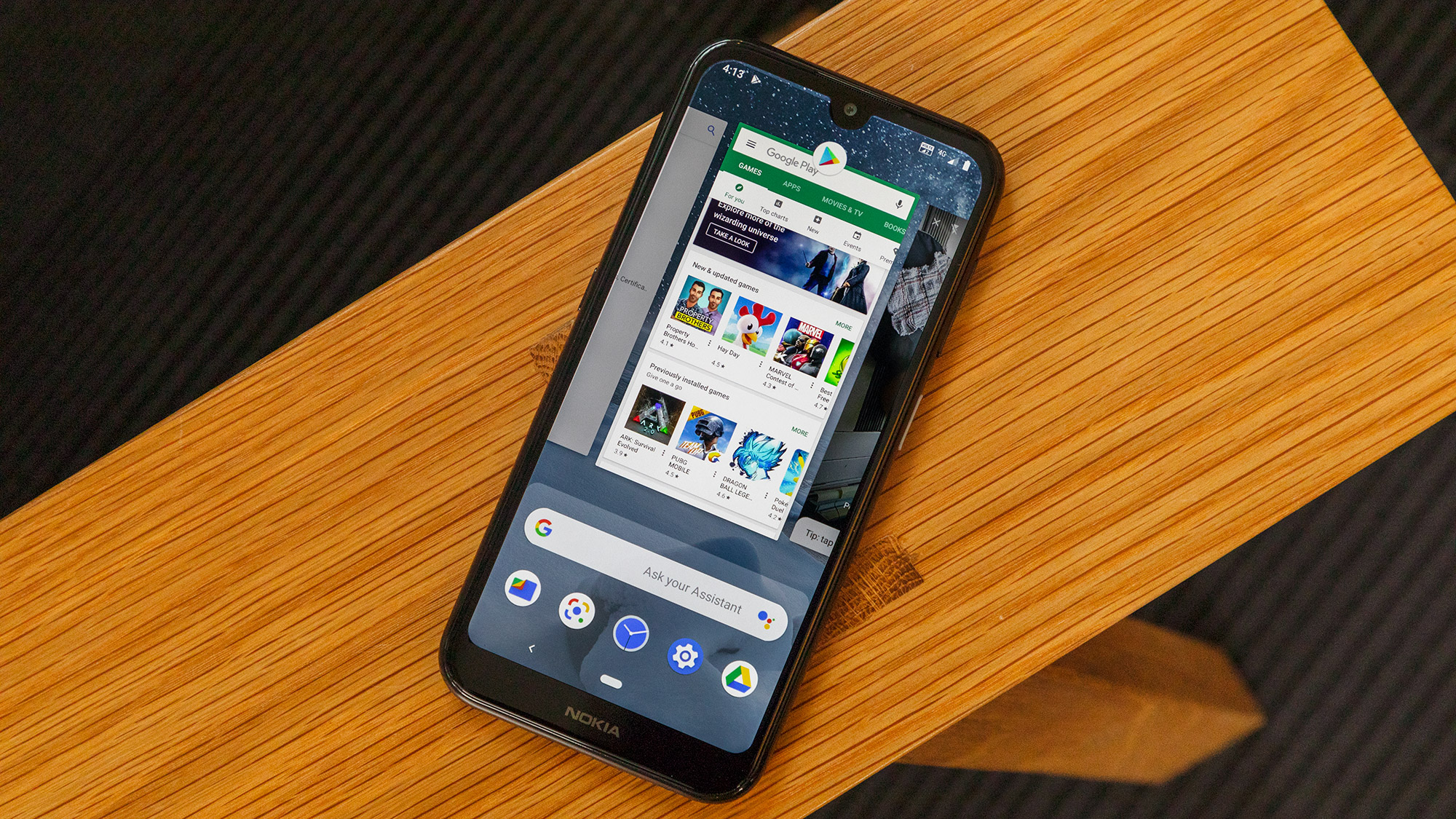
"The Nokia 4.2 often got a little toasty under the stress of certain apps and games."
If you're accustomed to more premium hardware, you'll quickly notice everything takes a hair longer on the Nokia 4.2, especially opening apps. The power deficit also presents itself in unique ways, like how the system omits certain animations — like swiping away notifications — to promote the illusion of responsiveness. The thing is, though, it's hard to do much better for the price.
The Moto G7 Power is appreciably sprightlier than Nokia's 4.2, with its Snapdragon 632 silicon yielding a Geekbench 4 score of 4,485, compared with the 4.2's 3,373. Then again, the G7 Power costs $60 more. A better point of comparison could be last year's Moto G6, which may be a year old but still managed to outpace the 4.2 by about 600 points, thanks to a slightly snappier Snapdragon 450 chipset. Better yet, the G6 now costs about as much as Nokia's newer offering.
The 4.2 is a bit closer to Motorola's handsets where graphics performance is concerned. In 3DMark's Ice Storm Unlimited test, which measures the polygon-crunching capabilities of low-end phones, the 4.2 notched a score of 13,490 — some 1,400 points behind the Moto G7 Power. It's far from the best result we've seen, though again, for the price, what can you say?
Battery life: Just fine
The Nokia 4.2 and its 3,000-mAh battery delivered 9 hours and 12 minutes in Tom's Guide's Battery Test, which tasked the device with endlessly streaming webpages over T-Mobile's LTE network at a brightness of 150 nits. That's exactly 1 hour less than the average for smartphones.
For reference, the Moto G7 Power, with its massive 5,000-mAh pack, notched more than 15 and a half hours in the same test. The Moto G6 fared a bit better than the 4.2, at 9:25, while the $269 Nokia 6.1 — one of HMD's midrange offerings from last year — slotted in at 10:24.
MORE: Smartphones with the Longest Battery Life
The battery life is passable, but the decision to fit a micro USB port to the 4.2 is particularly annoying when it's time to recharge. Typically, I bring a 60-watt Chrome-branded USB Type-C charger with me on trips — it can push enough juice to charge my MacBook Pro and Nintendo Switch, and even allows my Pixel 3 to top up via 18-watt USB Power Delivery fast charging. But during my excursions with the Nokia 4.2, I had to remember to carry a separate micro USB cable and adapter at all times. It was an annoyance I haven't had to deal with in quite some time.
Software: Android One, pure and simple
As with all of Nokia's recent phones, the 4.2 touts Android One software for an experience similar to what you get in Google's Pixel line. There are some light customizations in effect here, with HMD providing its own Nokia-branded camera; FM tuner; and phone management and support apps; but otherwise, this is pure Android 9 Pie, through and through.

As such, it's hard to find fault with the software in place here. Android One implementation means the 4.2 will see Android Q either late this year or early next. The potential for future updates is unclear, though HMD has a respectable track record with regard to keeping its handsets up to date. If any sub-$200 handset is going to get regular security and bug patches, the 4.2 stands a better chance than the rest of them.
Bottom Line
It's hard recommending a phone for less than $200, and the Nokia 4.2 demonstrates exactly why. HMD typically produces remarkably inexpensive phones that offer excellent bang for their buck, but I fear the 4.2 is simply too cheap to even get the basics right.
Absolutely nothing about this handset, save for its design, is particularly noteworthy. The performance is middling, the battery life is so-so and the cameras will never impress you. That's not to say the phone is downright bad in any of those respects, but rather that you are simply getting what you pay for.
Unfortunately, our recommendation is that you should simply pay more, if you can. The G7 Power goes for $250 and blows the 4.2 away with regard to battery life; its user experience is also much more consistent and the software is comparable to Nokia's implementation of Android One. Moto's older G6 is a solid option if you find the price tag on Nokia's 4.2 appealing, and last year's Nokia 6.1 might have a markedly less modern-looking design, but it's much more capable where it counts and will probably last you a few years longer, too.
The Nokia 4.2 offers a pretty face, though it'll age far less gracefully once its flaws start to surface.
Adam Ismail is a staff writer at Jalopnik and previously worked on Tom's Guide covering smartphones, car tech and gaming. His love for all things mobile began with the original Motorola Droid; since then he’s owned a variety of Android and iOS-powered handsets, refusing to stay loyal to one platform. His work has also appeared on Digital Trends and GTPlanet. When he’s not fiddling with the latest devices, he’s at an indie pop show, recording a podcast or playing Sega Dreamcast.
